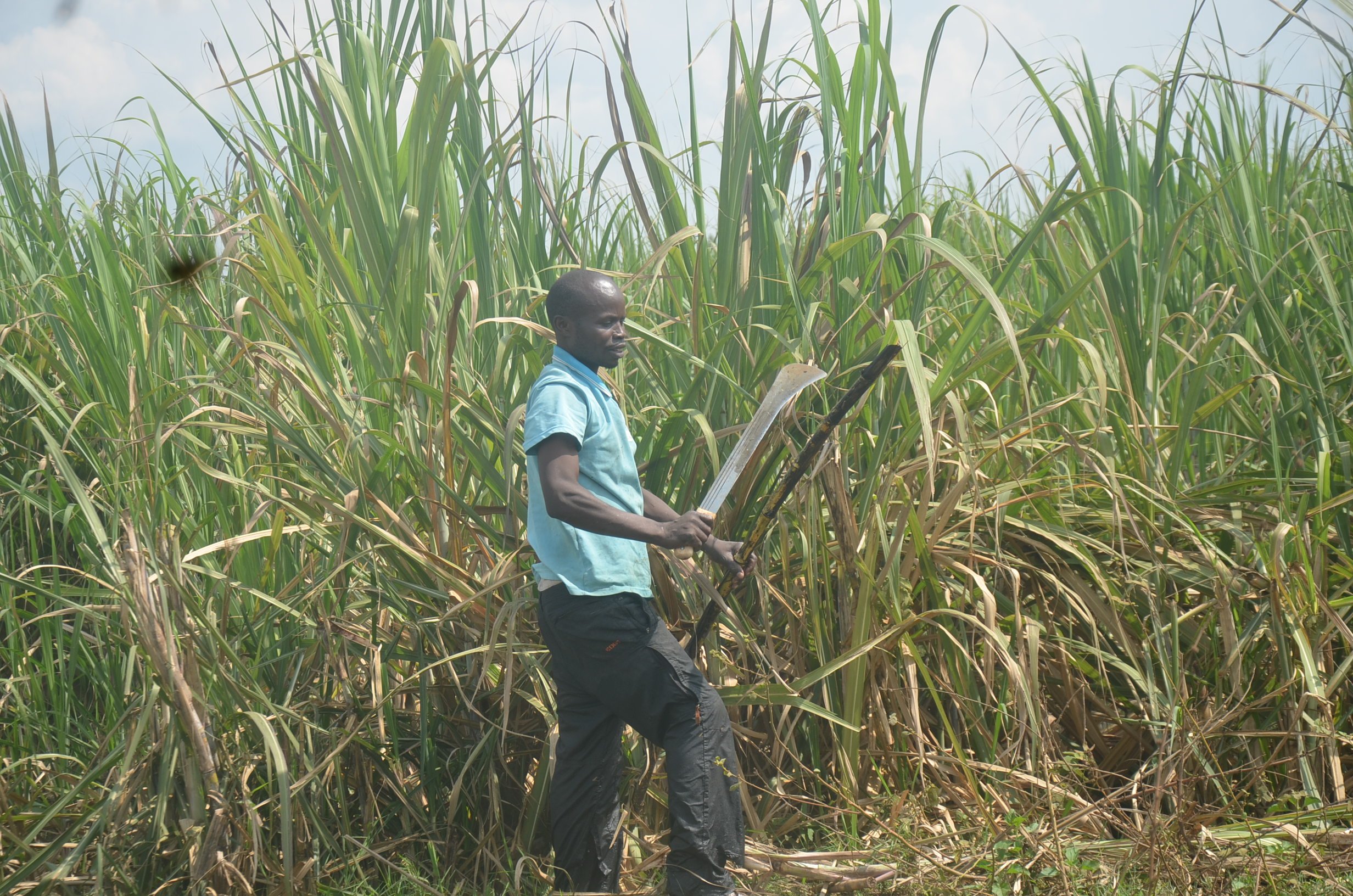Prime
Growth of sugar mills in Busoga threatens wetlands

Farmers harvest sugarcane grown in a wetland in Buyende District recently. PHOTO/TAUSI NAKATO
What you need to know:
- A report by the Ministry of Water and Environment suggests that Uganda will only be left with 1.6 percent of its wetland coverage by 2040.
The continued growth of sugar mills in Busoga has raised a lingering concern about government efforts to save wetlands in the Sub-region.
Busoga is currently a major sugarcane-growing area in Uganda, with at least six sugar mills distributed across the Sub-region, including; Kakira Sugar Works Limited in Jinja District, Sugar and Allied Industries Limited (Kaliro), Mayuge Sugar (Mayuge), Bugiri Sugar (Bugiri), Kamuli Sugar (Kamuli) and GM Sugar (Buikwe).
However, two others, including CN Sugar and Kidera Sugar, are undergoing construction in Namayingo and Buyende districts respectively.
Previously, rice farmers were seen as the majority of people encroaching on wetlands, but sugarcane farmers have since joined the fray due to shortage of land for cultivation to meet the increased demand for raw cane.
The Chairperson Uganda Sugarcane Out Growers Association, Mr Isa Budhugo, now says most (sugarcane) farmers hire wetlands from people who claim ownership, and that they (farmers) know that they get more yields when they grow sugarcane in wetlands.
“If the plantations are well managed, they can get about 150 ton per hectare compared to 60 tons when grown in other areas without wetlands,” Mr Budhugo said in an interview on Sunday.
He says 30,000 farmers are engaging in sugarcane growing in Busoga Sub-region across 200,000 acres of land, and called for environmental officers to guide them (farmers) on how to grow sugarcane in wetlands or swamps, rather than chase them away.
He added: “As farmers, we don’t know the gazetted wetlands in Busoga; farmers simply hire them and grow cane, thinking they are owned by people and who even have their land titles.”
In February, President Museveni, while speaking during the Tarehe Sita celebrations in Bugweri District, said wetland degradation is not only unprofitable, but a threat to global climate and ordered those occupying them to vacate.
A report by the Ministry of Water and Environment suggests that Uganda will only be left with 1.6 percent of its wetland coverage by 2040.
However, the Chairperson Greater Busoga Sugarcane Growers Union, Mr Godfrey Biriwali, says the government should first compensate people before they vacate the wetlands.
“People in Busoga are financially incapacitated, and mostly depend on sugarcane and rice-growing as their source of income; they (therefore) can’t just vacant the wetlands before the government compensates them,” he said, calling for sensitisation by the government on the importance of wetlands.
The General Secretary of Busoga sugarcane growers Association, Mr David Christopher Mombwe, however, says most wetlands are “simple streams”.
“There is a difference between wetlands and streams. In Busoga, we don’t have wetlands, but simple streams which easily dry up when it starts to shine, unlike wetlands. We have few gazetted swamps like Mpologoma,” he said, warning that if sugarcane is grown in waterlogged areas, it will rot.
Mayuge District Senior Environment Officer, Mr Thomas Aram, described as “illegal” for farmers to occupy wetlands because “they are natural sponges that trap water”.
When it rains, he said, most of the water is stored in wetlands, and when farmers encroach on them, that means water will flood in human settlements or gardens because the capacity of the wetlands to store the stormy or runoff water has been compromised.
He adds: “Besides big water bodies like lakes, oceans, seas, wetlands are a source of evaporation, meaning when you destroy them, you affect its capacity to offer evaporation, which affects rainfall formation.”




